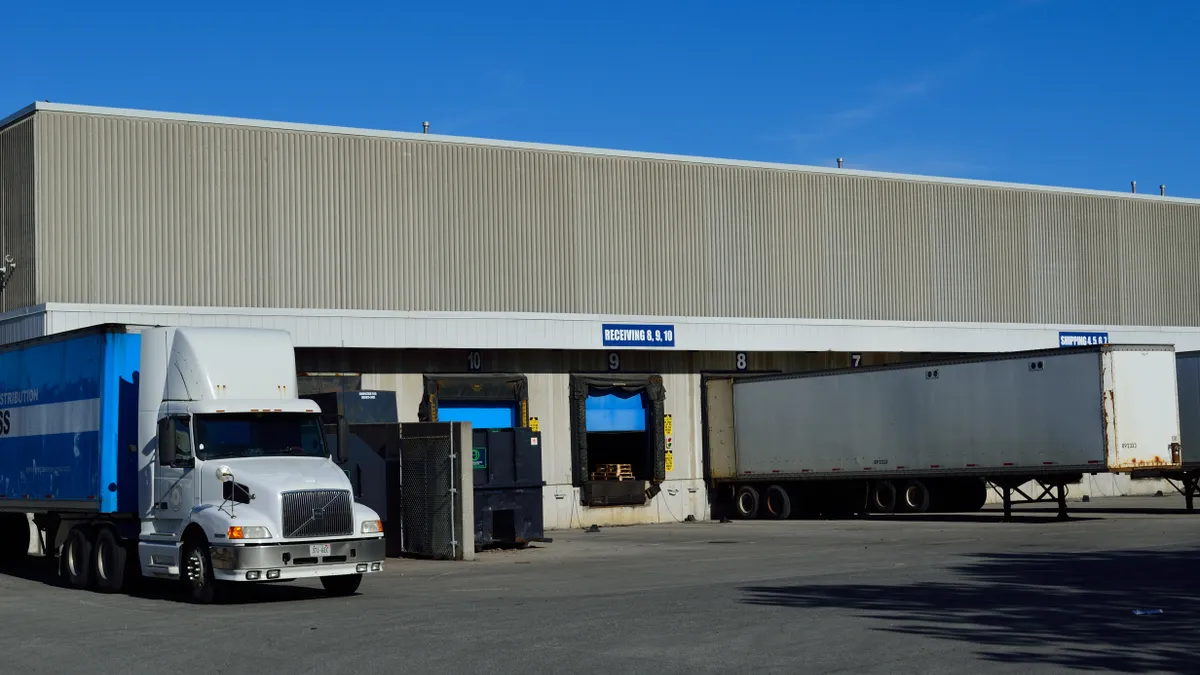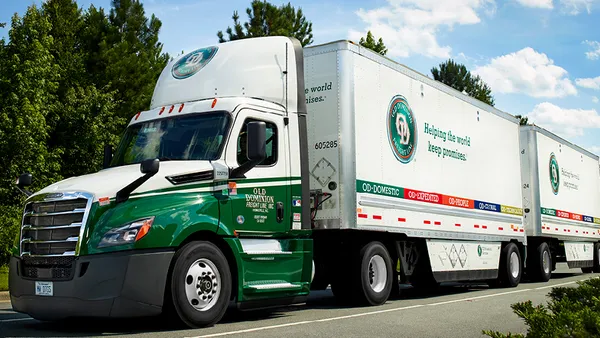In a world where customers expect orders on time and in full and rarely tolerate excuses, shippers and carriers must keep up, ushering in a need to increase efficiency in the supply chain and reduce dwell time.
"Drop trailers are an old solution to an old problem," Sean Riley, senior global industry director, manufacturing and transportation at Software AG, told Supply Chain Dive via email. In a drop trailer program, a driver arrives to a pre-determined spot and picks up an already loaded trailer rather than waiting for a shipper to fill an empty trailer.
But just because drop trailers aren't a new concept, doesn't mean they're not a viable strategy today, Riley said. "The driver shortage is a continual issue and a well-operated drop-and-hook program resolves this issue," he said.
In addition, technology increases transparency and holds promise for enhanced efficiency in drop trailer programs.
What's old is new again
Riley pointed out that the traditional understanding of a drop-and-hook program is that a trailer is dropped in the yard and a second trailer is moved from the yard.
Today, technological advancements allow for this preprogram to be completed at the dock door, which is the most efficient program for the operator and the shipper.
"The carrier is still serving as an inventory holding area, which adds cost, but in all likelihood is less than the cost of detaining a driver," he said
Shippers have to know where their asset is — whether it's the truck, the trailer or a container, and how it is being utilized, according to Torsten Welte, Global VP and Head of the Industrial Business Unit for Aerospace and Defense, plus Travel and Transportation at SAP. "What's the capacity of that asset and how is it being utilized? Where is it and how should it be deployed," Welte told Supply Chain Dive in a phone interview. "Then you have to manage from a system perspective each individual component."
Indeed, shippers need to keep a close eye on their inventory needs and unanticipated inventory fluctuations, something drop trailers stocked with inventory can help alleviate — to an extent, Riley noted, adding that shippers must also examine the capabilities of their carriers.
"With the continued exasperation of a driver shortage, carriers will have additional leverage to push shippers to turn trailers faster to offset the need to increase rates," Riley said. "Conversely, as continued future economic uncertainty occurs, additional capacity could be available, which enables carriers to have assets at a shippers' location and not incur costs to store them at their own facilities or take additional storage lot space."
Beyond drop and hook
Use of drop trailers can help with efficiency, but they can't solve problems like congestion. Riley said evolving technology, in the form of the Internet of Things (IoT) enabled control can play a significant role.
"Specifically, this means drivers that are en route will be notified of the best speed to reach the destination at a set time. This set time will be based on other carrier arrivals and gate, yard and/or dock availability. The use of drop trailers can speed the process of intake into a facility when coupled with IoT and security gate availability," he said.
With enough advanced technology, drop trailers could become obsolete.
"Carriers that offer real time location data accessible through an API enable shippers to be much more precise in how they operate their supply chain and lend the ability to forgo the need for drop trailers, as arrival times can be precisely understood and integrated into a loading/unloading schedule automatically," Riley said.














